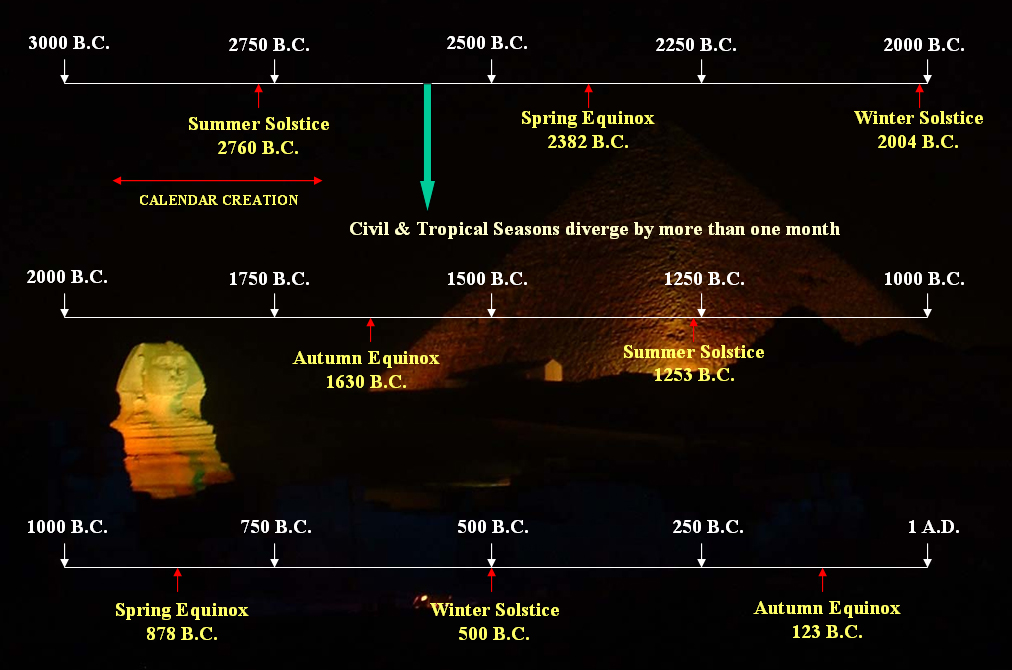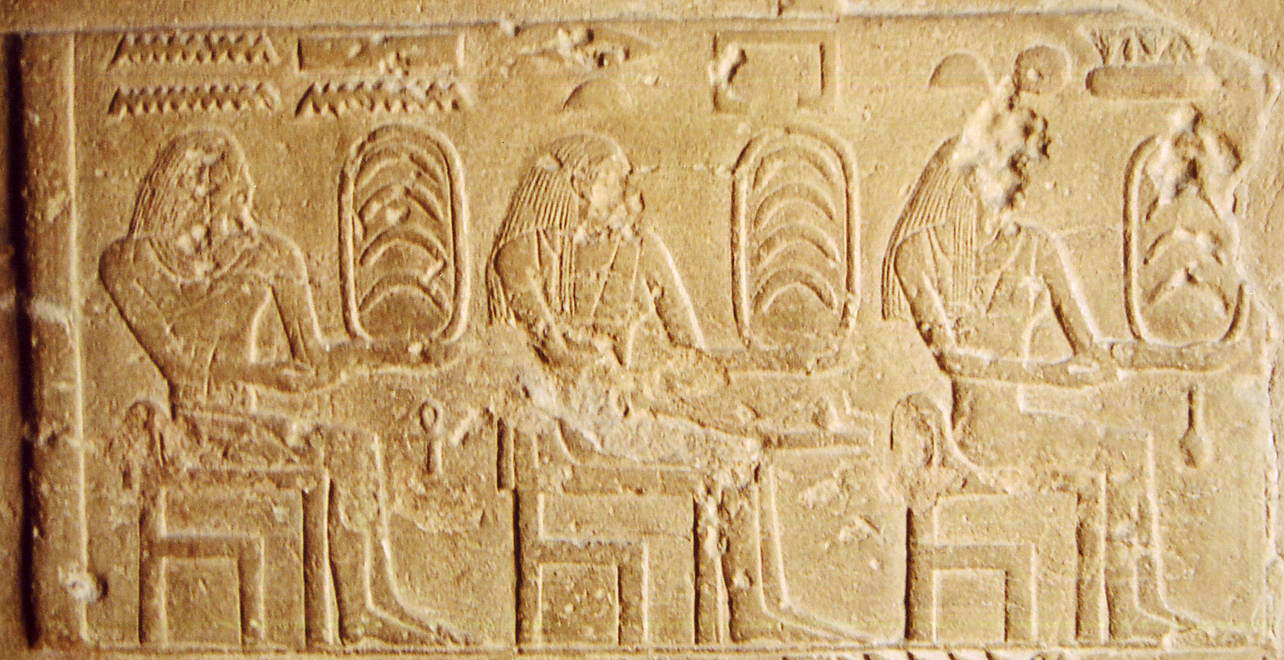The Egyptian calendar and Archaeoastronomy (Belmonte 2009; see below)
El calendario del Egipto antiguo: implicaciones arqueoastronómicas
Calendario civil del Egipto antiguo: tumba de Mereruka (© J. A. Belmonte)
The Egyptian civil calendar: tomb of Mereruka (© J. A. Belmonte)
El calendario civil del Egipto antiguo era un calendario vago de 365 días sin años bisiestos, de forma que su día de Año Nuevo, llamado Wepet Renpet, se desplazaba de manera continua sobre el tapiz de las estaciones completando un ciclo en algo más de 15 siglos. Debido a esto, Wepet Renpet coincidía en ciertos momentos con las fechas claves del ciclo anual como solsticios y equinoccios (ver Figura 1). Nuestro trabajo sugiere que en estas épocas clave, se produjeron fenómenos sociales, políticos y religiosos sugerentes que llevaron a la erección de grandes monumentos que estuvieran orientados de manera simultánea a Wepet Renpet y al correspondiente fenómeno solar.
Hubo en particular tres monentos clave: (1) la coincidencia con el equinoccio de primavera durante la V Dinastía, momento en que los reyes decidieron erigir toda una serie de templos solares orientados precisamente a la salida equinoccial del sol; (2) su coincidencia con el solsticio de invierno a principios del Reino Medio, cuando los reyes de las dinastías XI y XII comenzaron a erigir el que, con el paso del tiempo, se convertiría en el templo principal de Egipto, Karnak, orientado de forma simultánea a Wepet Renpet en esa época, a la salida del sol en el solsticio de invierno y, además, perpendicularmente al Nilo, en una combinación de astronomía y topografía absolutamente singular; y (3) la coincidencia nuevamente, por primera vez desde la creación del calendario, tras el paso de un ciclo completo, del solsticio de verano con Wepet Renpet durante el reinado de Ramses II. La orientación de templos como Abu Simbel y numerosos textos astrónomicos reflejan claramente esa circunstancia. Estos sugerentes resultados han sido publicados en el volumen de 2008 del "Journal for the History of Astronomy" y defendidos en Rodas en el X Congreso Internacional de Egiptólogos (X ICE) y en Granada en el congreso "Cosmology across Cultures" (CAC-SEAC2008).
Diagrama que muestra la evolución temporal de Wepet Renpet (Año Nuevo Egipcio) a lo largo de las estaciones trópicas y de las correspondientes estaciones del sol (solsticios y equinoccios). Desde la creación del calendario civil, en el periodo dinástico temprano, se produjeron algunos hitos importantes en esta evolución tal como la concordancia con el equinoccio durante la V dinastía, cuando se erigieron de forma sistemática los primeros templos solares, con el solsticio de invierno, a principios del Reino Medio cuando Tebas y sus alineamientos solsticiales se convirtieron en relevantes, y con el solsticio de verano durante el reinado de Ramses II, cuando el calendario civil y las estaciones trópicas volvieron a coincidir por primera vez desde la creación del calendario. Se podrían adivinar otras concordancias (© J. A. Belmonte)

Diagram showing the evolution of the wandering Wepet Renpet (Egyptian New Year´s Eve) with respect to the seasons and the corresponding stations of the sun. Since the creation of the civil calendar in the early dynastic period, there were some important milestones of this evolution such as the concordance with spring equinox in the 5th Dynasty, when solar temples where erected, with winter solstice at the beginning of the Middle Kingdom, when Thebes and its solstitial alignments became relevant, and with summer solstice during the reign of Ramses II, when civil and tropical seasons once more became coincident for the first time after the creation of the civil calendar. Other concordances could also be envisaged (© J. A. Belmonte)
The wandering civil calendar of ancient Egypt did not include leap years. Consequently, its New Year´s Eve, or Wepet Renpet, wandered through the framework of the tropical seasons completing a cycle in nearly 15 centuries. Due to this fact, Wepet Renpet was coincident with the stations of the sun, such as soltices and equinoxes, in certain epochs (see Figure 1). Our work suggests that social, political and religious changes were produced in these key epochs, driving to the construction of important monuments that were simultaneously orientated to Wepet Renpet and the corresponding solar phenomenon.
In particular, there were three key moments: (1) the coincidence of the spring equinox during the 5th Dynasty, an epoch when the kings decided to erect a series of solar temples equinoctially orientated, precisely; (2) the coincidence of Wepet Renpet with the winter solstice at the beginning of the Middle Kingdom, when the kings of the 11th and 12th Dynasties started to build what would become the most important temple of Egypt, the sanctuary of Amon at Karnak (this was simultaneously orientated to Wepet Renpet in that epoch, winter soltice sunrise and, besides, perpendicular to the Nile, in a singular and most conspicuous combination of astronomy and topography); and (3) the coincidence with summer solstice during the reign of Ramses II, when civil and tropical seasons once more became coincident for the first time after the creation of the civil calendar. This fact is clearly reflected in the orientation of certain temples such as Abu Simbel and in several suggestive astronomical texts. These results have been published in the 2008 volume of the Journal for the History of Astronomy and have been defended in Rhodes, in the X International Congress of egyptologists (X ICE), and in Granada, within the framework of the conference Cosmology across Cultures (CAC-SEAC2008).
